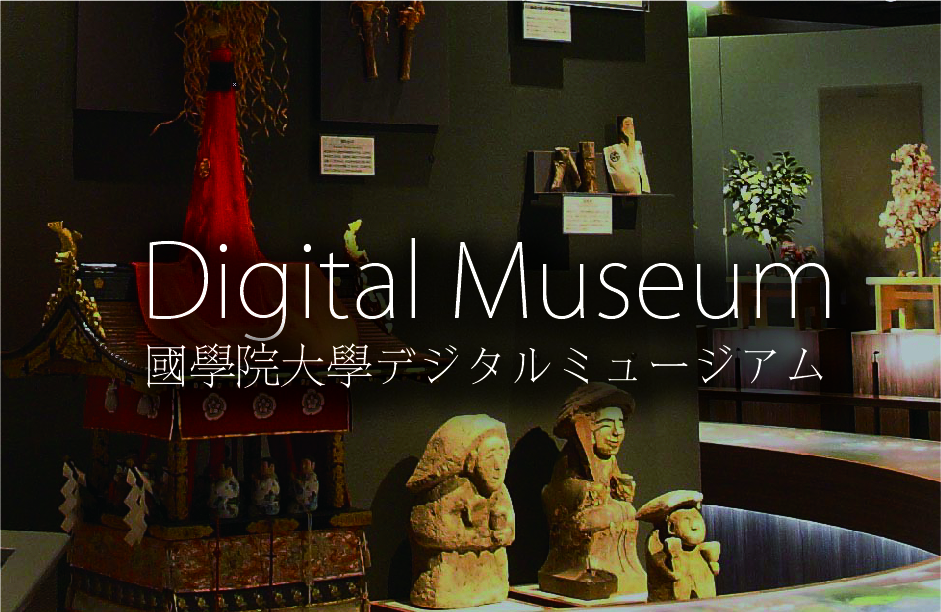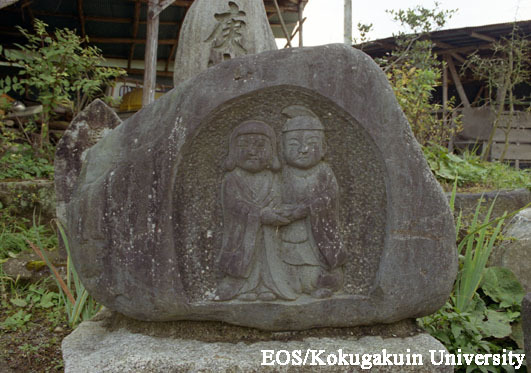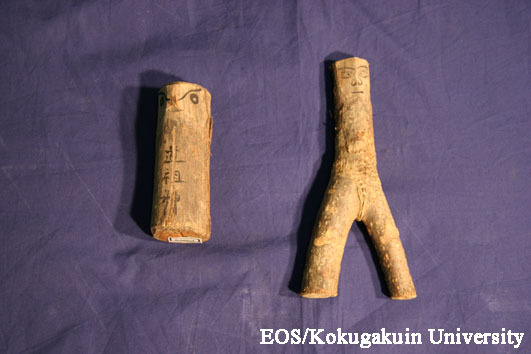- トップ
- Encyclopedia of Shinto
- Dōsojin
Encyclopedia of Shinto
| Main Menu: | |
| Links: |
詳細表示 (Complete Article)
| カテゴリー1: | 2. Kami (Deities) |
|---|---|
| カテゴリー2: | Kami in Folk Religion |
| Title | Dōsojin |
| Text | "Tutelary of roads," a generic name for a kami often found dedicated at village borders and intersections as a guard against noxious spirits and evil kami that bring pestilence and disasters to the local community from outside. Frequently called sae no kami, dōrokujin, funado no kami, or shakujin, they are sometimes found in the form of objects shaped like male and female genitalia or round stones, but they are also often depicted as a pair of paired male and female figures. Specific deities identified as dōsojin include the bodhisattva Jizō, Sarutahiko, Kōshin, Kōjin, Konseishin, and Ubakami. Festive celebrations to dōsojin are frequently observed on January 14, the evening before the "little New Year's day" on the 15th. Called by various names including sagichō, tondo, and saenokami, these observances involve the exorcism of pestilent spirits and prayers for good harvest in the coming year. The late Heian period, Hokke genki includes an entry relating the appearance of a dōsojin which it calls sae no kami ("kami of the border"). Since the original purpose of the dōsojin was to guard against invasion by evil wandering spirits believed to cause pestilence, the Genki relates that a damaged dōsojin could presage a coming epidemic. According to the story, a dōsojin image was enshrined under a large tree, but the image was in the "man's shape" alone, without the accompanying woman's figure, thus reflecting a belief that the dōsojin should be enshrined as a pair of mated male-female images or shapes. According to the early myths of the Kojiki and Nihongi, the original name of the sae no kami was Kunato no sae no kami. The fact that this sae no kami came to be written as dōsojin or merely sojin is explained in an entry in the Wamyō ruijūshō (compiled ca. 938) as follows: Dōso, a term commonly used to refer to the child of the god Gòng-gōng-shì (Jp. Kyōkōshi); since he enjoyed taking long trips, after he died he was enshrined as the original tutelary (sojin) of the road. Also called Sae no kami. This entry thus suggests that the original dōsojin was superimposed on the model of a Chinese tutelary of roads and travel. The festivals of dōsojin held on the holiday known as "little New Year's" are generally observances involving fire. At the village border or a large road intersection, branches of bamboo and green cedar are used to construct a large pillar or circular mass that is burned together with various New Year decorations and implements, including pine gate decorations and the papers used in New Year calligraphy contests. Eating rice cakes and confections roasted over the bonfire is believed to prevent sickness during the year and improve one's calligraphy and academic abilities. The burning of large erect pillars signifies the exorcism of pollutions from within the community via the purifying element of fire, simultaneously drawing into this world new powers of life. This theme is reinforced by the common custom of young men's engaging in boistrous or reckless competitions, or the staging of mock battles with the display of violent energy. The Meiji government's policy of introducing modern Western "civilization and enlightenment" led to the prohibition of dōsojin festivals in some areas due their status as "superstition." See also sakai no kami. -Kawamura Kunimitsu |






